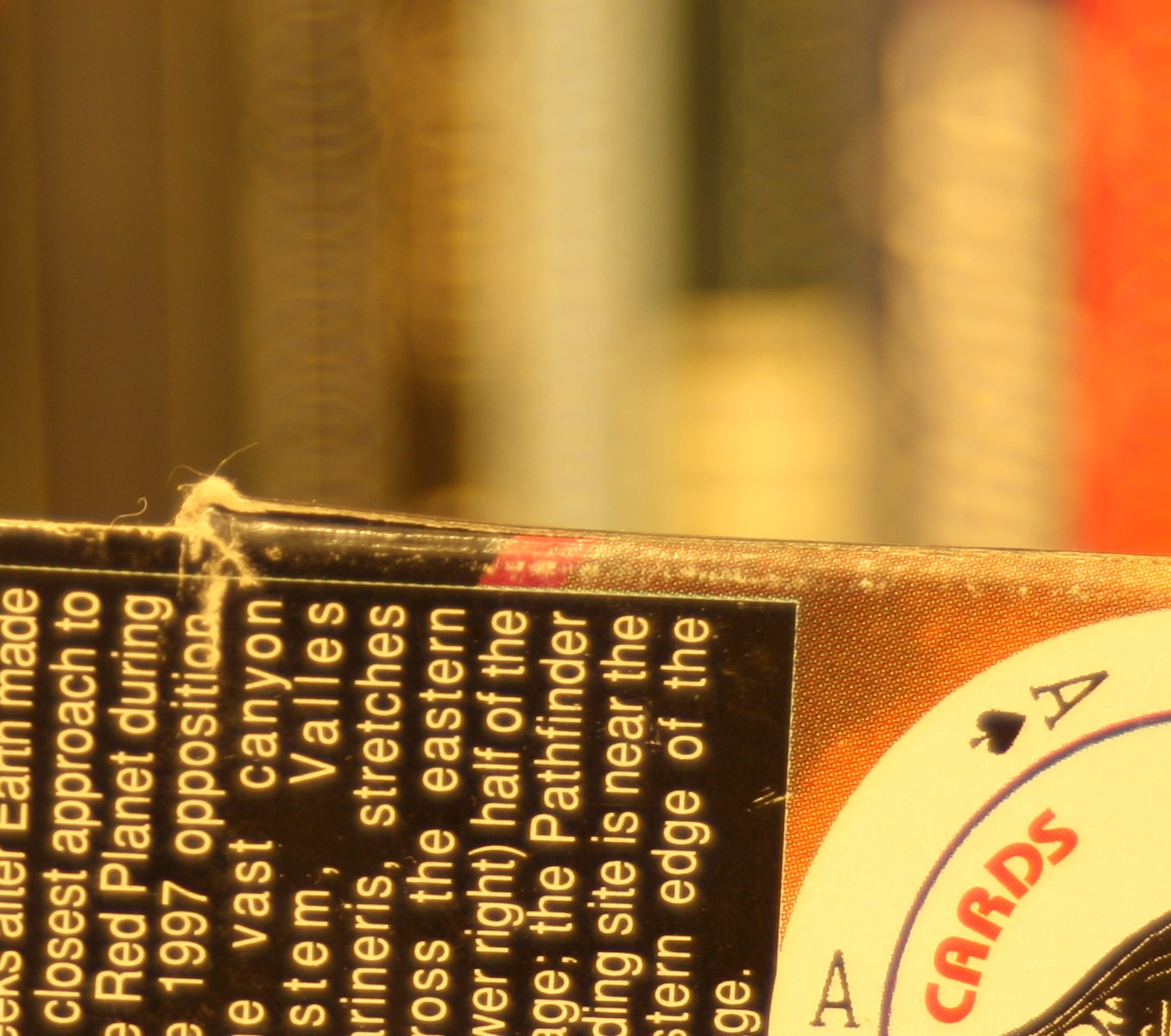You'll have to be within a foot or two. I used a glassless adapter with my 30D and an FD 135/2.8 and had to be within roughly 6 feet to focus on the subject. I have an FD 35-70, too; if you don't get an accurate answer by tonight I'll try to measure the exact distance for you with it at 50mm.
I also have a cheap (I think it was $1 from KEH) off-brand adapter with glass in it. I found that I had to stop down my 135/2.8 lens to f/8 in order to get good pictures. I ended up selling the 135 (which was a shame, it was a fantastic lens, compact, lightweight, and well-built) and buying a Nikon non-AI 135/2.8 (also well-built but about 50% larger and heavier than the Canon). It wasn't a very expensive tradeoff, luckily: the Canon sold for about $10 and I bought the Nikon for around $40; but a 50/1.2 lens is much more expensive, so if it's still around a 4x markup, you might almost be better off getting a micro-4/3 camera instead!
Oh, and I also, sadly, found that my $250 all-plastic EF-S 55-250/4-5.6 is sharper than the Nikon at all overlapping apertures and focal lengths (i.e. wide open the cheap modern consumer 5x zoom is sharper than a 40-year-old near-professional fast prime). Just something to consider if you are going to get into manual focus lenses: they are much more fun but, unfortunately, not as sharp as a lens with modern construction and coating.
Edit after performing the test:
I used my FD 35-70/3.5-4.5 at 50mm, wide open (I guess that means f/4) with my glassless FD-EOS adapter (a generic one from eBay, $15 shipped) on my 30D. I set up a ruler with the 0"(inches) point at 6" from the plimsole line (heh) then took pictures of a pack of cards (1) just beyond what I would consider "sharp" focus, (2) in the middle, as near as I could tell, of the sharp focus range, and (3) just inside of what I would consider sharp focus (i.e. pictures (1) and (3) were somewhat blurry, while (2) should be sharp). Picture (1) was at the 10.5" mark of the ruler, (2) was at 9.75", and (3) was at 9". I wasn't sure if that meant, with the narrower DOF of your 50/1.2, your maximum focus distance will be just under 16.5" or at 15.75", so I stopped down to about f/8 and did my best with the reduced light to determine the maximum focus distance, and the threshold seemed to be about 10.5" again. So I think you won't be able to focus beyond about 16 inches.
I'm not positive I set everything up at exactly right angles there, so you might be able to capture another half-inch or so, and maybe even another quarter-inch on top of that if your lens focuses to beyond infinity.
Here is a 100% crop of roughly the center of the 15.75"-from-the-sensor middle-of-the-focus-range capture. Note that the books in the background are 14.5" past the end of the ruler (32.5" away from the sensor). What I would normally call beautiful, buttery-smooth bokeh is, in this context, an incredibly-frustrating why-can't-I-focus-on-that problem.

(I'm not entirely convinced the apparent CA on the black circle of the Ace is actually CA: upon very close examination of the box, that circle is actually a dark purple, and I can just barely see a tiny little leakage of reddish ink on the edges of that circle; that 100% crop is about 2x actual size so it's much more visible in the picture. Of course, it could just be a characteristic of the lens, which is a consumer zoom and from the film era).
All of which reminds me: your 50/1.2 would probably make a great macro lens! I've been using the 35-70 with a cheap extension tube set (heads up: while off-brand air may be the same as Canon air, off-brand threads are not as smooth as Canon threads) as my macro lens, and at f/3.5 under anything other than bright sunlight (and even then, as the lens itself usually shades the subject) it's pretty difficult to figure out where exactly the focus point is. Obviously you still have to stop way down to take the picture, but having eight times as much light would probably help you a lot when trying to center the focus on the middle of your subject!


